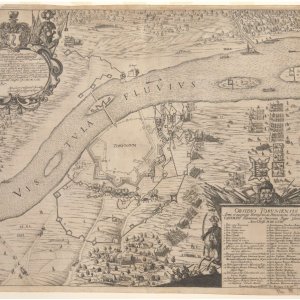Near the borders of Poland in the province of Lesser Poland there stands a high and rocky crag of the Tatra mountains […] whence the river Vistula flows from its source and meanders through the centre of the Crown Kingdom of Poland northwards to the very city of Gdańsk, where its fresh waters into the salt water of the Baltic Sea flow and intermingle. Indeed, this one among all others in the Kingdom of Poland is known as the Head of All Rivers. These words about the Vistula and a woodcut showing a landscape with Barania Góra (Ram Mountain), where the sources of the Vistula are located, open an exhibition dedicated to this queen of Polish rivers and portrayals of it in historic books, maps, and plans. A characterisation of the Vistula and an engraving of it were included in a 1703 edition of Hieronim Morsztyn’s work “Antypasty Małżeńskie (Matrimonial Appetisers)”, a collection of three amorous tales first published in 1650.
